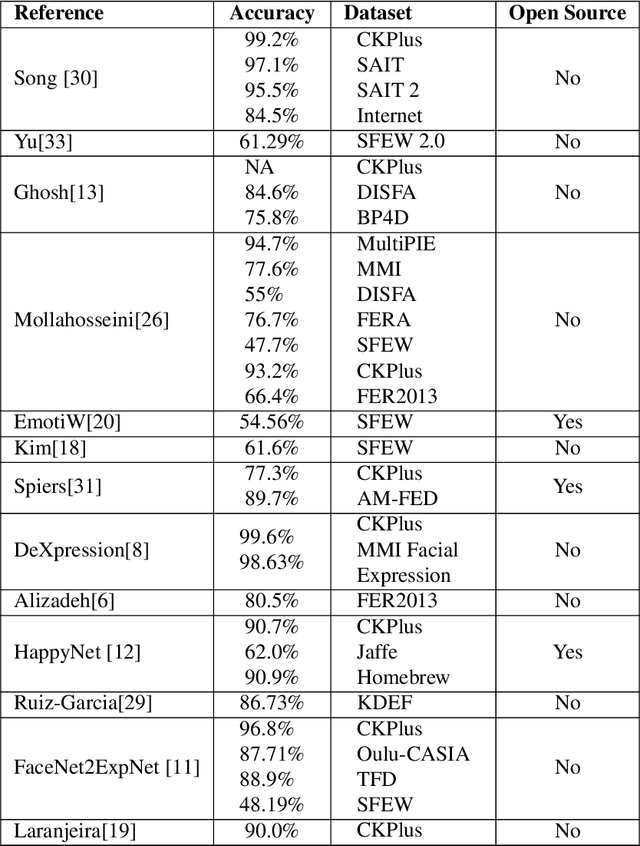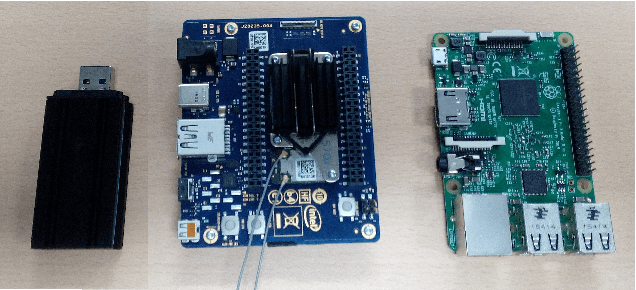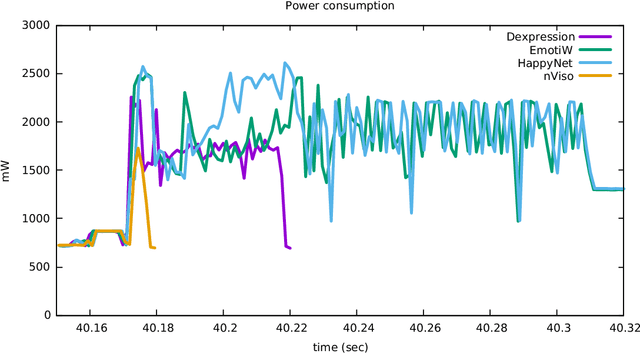Miroslaw Malek
It All Matters: Reporting Accuracy, Inference Time and Power Consumption for Face Emotion Recognition on Embedded Systems
Jun 29, 2018



Abstract:While several approaches to face emotion recognition task are proposed in literature, none of them reports on power consumption nor inference time required to run the system in an embedded environment. Without adequate knowledge about these factors it is not clear whether we are actually able to provide accurate face emotion recognition in the embedded environment or not, and if not, how far we are from making it feasible and what are the biggest bottlenecks we face. The main goal of this paper is to answer these questions and to convey the message that instead of reporting only detection accuracy also power consumption and inference time should be reported as real usability of the proposed systems and their adoption in human computer interaction strongly depends on it. In this paper, we identify the state-of-the art face emotion recognition methods that are potentially suitable for embedded environment and the most frequently used datasets for this task. Our study shows that most of the performed experiments use datasets with posed expressions or in a particular experimental setup with special conditions for image collection. Since our goal is to evaluate the performance of the identified promising methods in the realistic scenario, we collect a new dataset with non-exaggerated emotions and we use it, in addition to the publicly available datasets, for the evaluation of detection accuracy, power consumption and inference time on three frequently used embedded devices with different computational capabilities. Our results show that gray images are still more suitable for embedded environment than color ones and that for most of the analyzed systems either inference time or energy consumption or both are limiting factor for their adoption in real-life embedded applications.
Time series kernel similarities for predicting Paroxysmal Atrial Fibrillation from ECGs
Apr 04, 2018



Abstract:We tackle the problem of classifying Electrocardiography (ECG) signals with the aim of predicting the onset of Paroxysmal Atrial Fibrillation (PAF). Atrial fibrillation is the most common type of arrhythmia, but in many cases PAF episodes are asymptomatic. Therefore, in order to help diagnosing PAF, it is important to design procedures for detecting and, more importantly, predicting PAF episodes. We propose a method for predicting PAF events whose first step consists of a feature extraction procedure that represents each ECG as a multi-variate time series. Successively, we design a classification framework based on kernel similarities for multi-variate time series, capable of handling missing data. We consider different approaches to perform classification in the original space of the multi-variate time series and in an embedding space, defined by the kernel similarity measure. We achieve a classification accuracy comparable with state of the art methods, with the additional advantage of detecting the PAF onset up to 15 minutes in advance.
 Add to Chrome
Add to Chrome Add to Firefox
Add to Firefox Add to Edge
Add to Edge